Things to do in Naples
To holiday in Naples is to visit the real Italy, without the frills, where grime and dirt somehow add to the flavour of a city bubbling with life and colourful characters like the lava below its surface on the convergence of seismic faults.
Most travel to Naples in order to visit the nearby and well-preserved ruins of Pompeii and Herculaneum, destroyed in an eruption of Mount Vesuvius, which stands sentinel over the city. Pompeii is one of Italy's most famous and popular attractions and the haunting ruined city justifies a trip to the region in itself. Sightseers keen to explore southern Italy also tend to use Naples as a base for expeditions along the scenic Amalfi coast. However, the city does have its own treasures: the Cappella Sansevero chapel, in the historic centre of Naples was built in the late 1500s and contains some masterpieces of Italian sculpture. The Cathedral of Naples, completed in the 14th-century, is a magnificent Gothic structure containing many valuable artefacts and art works. The Museo Archeologico Nazionale in Naples is a world-class museum, containing many of the artefacts and remains from Pompeii and Herculaneum. The San Gennaro Catacombs are fascinating and spooky, full of mosaics and frescoes, and the burial site of many notable Naples figures including San Gennaro, the patron saint of Naples, himself.
High summer means sweltering heat and crowds and is not the best time to travel to Naples, especially for sightseeing. Spring and autumn (April to June and September, October) are more pleasant seasons to pick for a Naples holiday, when the weather is warm and sunny and the archaeological attractions can be seen in relative peace and quiet.
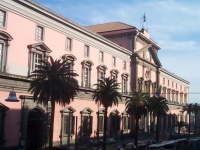
Museo Archeologico Nazionale
This fascinating, world-class museum houses the Farnese collection of antiquities from Lazio and Campania, as well as the incredible treasures of Pompeii and Herculaneum. Notable a…
Museo Archeologico Nazionale
This fascinating, world-class museum houses the Farnese collection of antiquities from Lazio and Campania, as well as the incredible treasures of Pompeii and Herculaneum. Notable among these collections are The Farnese Hercules and The Farnese Bull, the largest known sculpture from antiquity. On the mezzanine level is The Alexander Mosaic and at the furthest end is the Secret Room, showcasing erotic material found in the brothels, bath houses and taverns of Pompeii and Herculaneum. The top section of the museum houses the Campanian wall paintings, supported by a range of Campanian artefacts in the form of glass, silver and ceramics.
Website mann-napoli.it
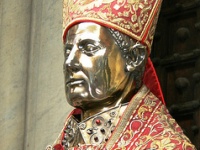
Duomo San Gennaro
The Chapel of San Gennaro is accessed from the south aisle of the Cathedral of Naples. Tradition tells the story of how two phials of San Gennaro's congealed blood liquefied in the…
Duomo San Gennaro
The Chapel of San Gennaro is accessed from the south aisle of the Cathedral of Naples. Tradition tells the story of how two phials of San Gennaro's congealed blood liquefied in the bishop's hand after his martyred body was transported to the church. Legend has it that disaster will strike if the blood fails to liquefy on specific festival days, specifically the first Saturday in May, on September 19 and December 16. Known as the Miracle of the Blood, the ceremony takes place during a special Mass in full view of the congregation. The first chapel on the right upon entry holds the famous phials of blood and a silver reliquary containing his skull. Beneath the Duomo are the excavations of well-preserved Greek and Roman roads that stretch beneath the modern city.

Museo e Gallerie di Capodimonte
This museum occupies a restored 18th-century palace perched upon the city's hills. The Farnese and Bourbon rulers amassed impressive collections of Renaissance paintings and Flemis…
Museo e Gallerie di Capodimonte
This museum occupies a restored 18th-century palace perched upon the city's hills. The Farnese and Bourbon rulers amassed impressive collections of Renaissance paintings and Flemish masterpieces. Notable among these are Masaccio's Crucifixion, Filipino Lippi's Annunciation and Saints and Raphael's Leo X, as well as Bellini's Transfiguration, Michelangelo's Three Soldiers and Breughel's The Allegory of the Blind. The palace is an attraction in its own right and the royal apartments are beautifully decorated and preserved with their 18th-century furnishings. Capodimonte is a pleasant neighbourhood in Naples, and the park surrounding the gallery is great for a peaceful stroll after ogling the art and finery of the museum.
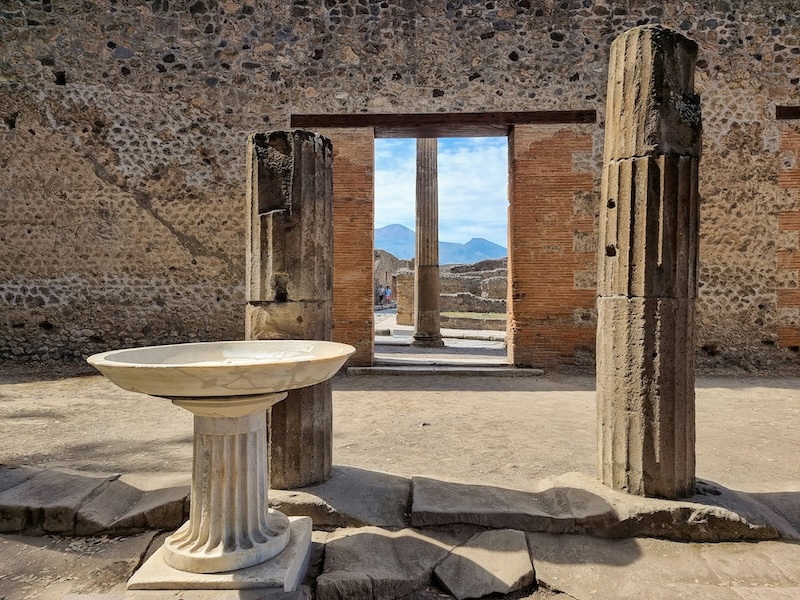
Pompeii
Mount Vesuvius erupted in the year 79 AD, burying the Roman city of Pompeii in volcanic lava and ash. The most evocative testimony to its victims is the 'frozen people', calcified …
Pompeii
Mount Vesuvius erupted in the year 79 AD, burying the Roman city of Pompeii in volcanic lava and ash. The most evocative testimony to its victims is the 'frozen people', calcified remains whose anguished contortions and facial expressions reveal the horror of their untimely deaths. Pompeii is one of Italy's most popular tourist attractions, seeing nearly 2.5 million visitors every year. It's one of the most intriguing sites of the ancient world and a full day of walking barely covers the many sites of interest. Pompeii is truly an unmissable attraction, along with the four associated sites of Herculaneum, Oplontis, Stabia and Boscoreale.
Website www.pompeiisites.org
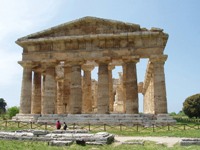
Paestum
Paestum was founded by Greek colonists in the 7th Century BC, later falling under Roman rule. The well-preserved Greek temples are arguably the best of their kind in the world, eas…
Paestum
Paestum was founded by Greek colonists in the 7th Century BC, later falling under Roman rule. The well-preserved Greek temples are arguably the best of their kind in the world, easily rivalling those of Sicily and Athens. These remarkable structures comprise the Basilica; the Temple of Poseidon; and the Temple of Ceres. A guide to the excavations and Archaeological Museum can be bought at any of the roadside shops. Heading north along Via Sacra will take visitors to the Roman Forum, gymnasium and amphitheatre. Finally, Paestum's Museum contains a fascinating collection of pottery and paintings found in the tombs of the area.
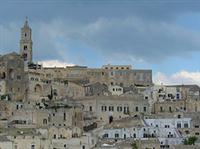
Sassi de Matera
The unbelievable cave-dwellings of Matera were dug into the tuff rock of the region, the 'houses' often little more than caverns. They remain testament to a troglodyte population b…
Sassi de Matera
The unbelievable cave-dwellings of Matera were dug into the tuff rock of the region, the 'houses' often little more than caverns. They remain testament to a troglodyte population believed to be the first human settlement in Italy. Some of the streets of present-day Matera double as rooftops to the underground dwellings, and beneath the surface, a network of labyrinths and caverns once traversed by the prehistoric civilisation can still be observed. As has been noted, the inhabitants of Matera's Sassi are the only people who can claim to live in the same houses as their ancestors did 9,000 years ago. It's fun to hire bikes and ride to the caverns further afield.
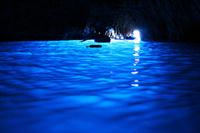
Blue Grotto (Grotta Azzurra)
An emblematic tourist attraction, the Blue Grotto (Grotta Azzurra) is reason enough for any visitor to Naples to make the short trip across to the island of Capri. A world-famous s…
Blue Grotto (Grotta Azzurra)
An emblematic tourist attraction, the Blue Grotto (Grotta Azzurra) is reason enough for any visitor to Naples to make the short trip across to the island of Capri. A world-famous sea cave, the Blue Grotto is perpetually filled with brilliant sapphire light, caused by sunlight entering through an underwater cavity and shining through the seawater from beneath. The cave also contains a smaller opening right at the level of the waterline, through which bright sunshine pours and tourists are admitted by rowboat.



